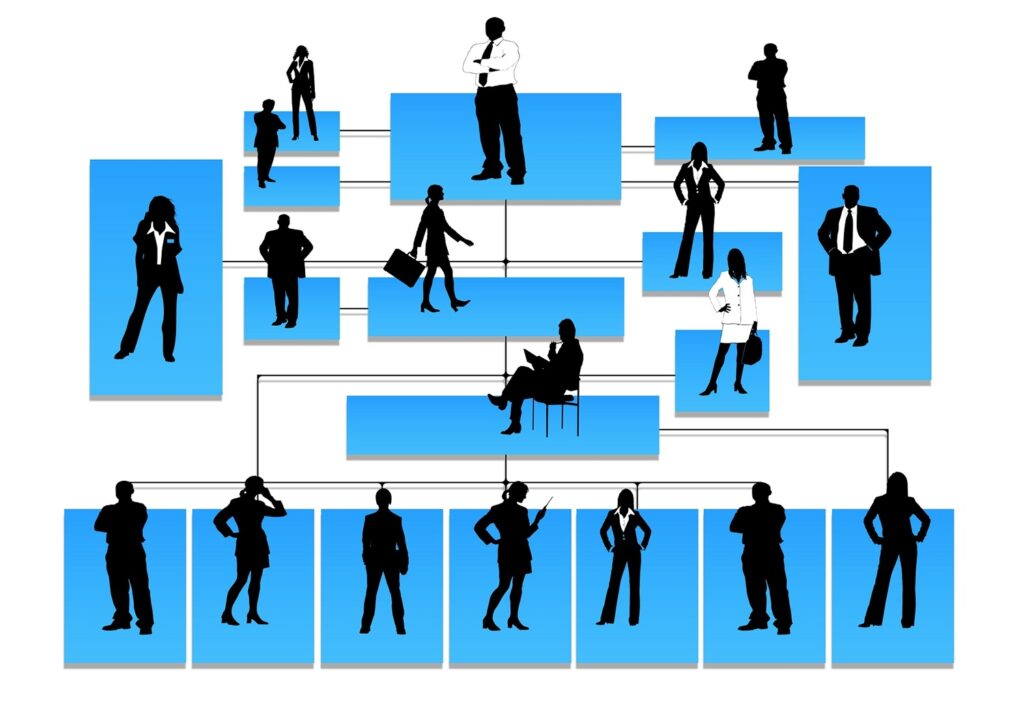What is an Organizational Structure?
Organizational structure can be identified as a system that summarizes how particular activities in the business organization are directed in order to achieve the identified goals and objectives. These outlines activities include job roles and responsibilities as well as the rules set by the management of the organization.
The organizational structure helps to identify the information flow between each level of the hierarchy of job roles. It can be either a centralized or decentralized structure. In a centralized structure, information flow from the top-down, allowing the decisions made by the management of the organization to flow down to the bottom-level employees. In a decentralized business environment, decision-making power and ability have been distributed among different levels of employees of the organization and the information flow can be from top to bottom, bottom to top, or horizontally.
Maintaining an organizational structure provides the opportunity for businesses to remain focused on their goals, increase productivity, and be efficient. A successful organizational structure fully defines the job role of each employee of the company and how those job roles fit well with achieving organizational goals and objectives. In simple terms, organizational structure explains how each job position supports the success of the organization.
There are many variations in the organizational structure. But, there can be four structures that can be seen often in the business industry.
04 main types of organizational structures
Functional
This is considered the most traditional approach in business structures. This explains grouping together the employees who perform similar tasks in the business process based on their specialized area. This can be seen most commonly in business organizations. The business functions are separated based on the employee tasks, grouped as teams and each area is led by managers who report to the higher level of the business hierarchy.
The advantage of maintaining a functional business structure is that it provides an opportunity for the employees with similar job responsibilities to communicate and work together towards a common goal. However, this can work as a barrier for the employees in gaining more knowledge out of their specialty or skills. Lack of knowledge can be disadvantageous to the employees as they are unaware of the other areas of the business process.
Divisional
In a divisional business structure, the employees are grouped based on the product or the service they provide, not their work type. In large business organizations, each business function has its own team of marketers, accountants, manufacturers, quality checkers, etc. Global corporations may have such divisional functions based on each geographic area. This organizational structure can be seen in small businesses as well.
Matrix
A matrix organizational structure is a hybrid function that is made up using functional and divisional structures. In this structure, the employees are reporting to different managers based on their current assignments or project. The reporting manager can change when the assignment is changing.
Having to report multiple managers can be disadvantageous in this structure as it can often create confusion. It is mandatory to maintain clear communication on job role expectations and priorities at all levels to implement this organizational structure successfully. However, this organizational structure provides a wider range of knowledge and experience to employees for their growth and maximize potential. Apart from that, it allows the management to put together the best possible team to face challenging situations in the business process.
Flat
The flat organizational structure is the implementation of the usual hierarchy of functional structure in a decentralized management system and doing away with the need of middle-level managers. Under this organizational structure, employees act as their own managers, providing them the ability to communicate with others on assignment and project ideas. This provides more freedom for employees and motivates self-starters to manage their own work without supervision.

